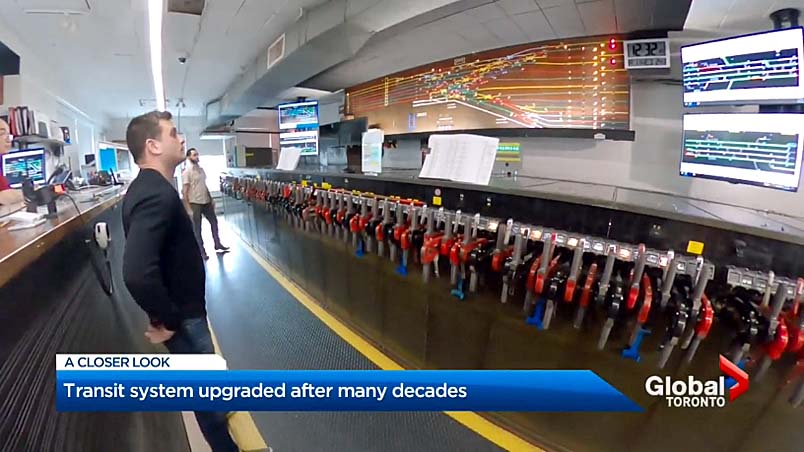
Toronto Ontario - After almost a century of utilizing a complex system of hand controlled levers to operate the switches and signals for
tracks that see about 900 train movements through Union Station on a typical weekday, Metrolinx is now turning to a computer to usher rail traffic through
Canada's busiest train station.
"No commuter would get to Union Station without these relays," David Kolbasovsky, manager of signals and communications with Metrolinx, told Global
News during a tour of the John Street tower.
"They work and they are reliable. The only reason we would want to replace them is to allow for upgrades and expansion, which is the only limitation we've
got right now."
The team at the facility are responsible for the rail corridor on the western side of Union Station.
In total, there are about 120 switches and 100 signals under the tower's control that are manually operated 24 hours a day, seven days a week.
GO Transit, VIA Rail, UP Express, and Amtrak along with freight train companies all operate through the area.
Bobby Currie and Sam Pedota, train movement directors with Metrolinx, work together under the direction of a supervisor to operate an intricate set of levers
spread out over several feet.
"We're using the levers to control the movement of trains with switches, which are the black levers, and signals, which are the red levers," Currie
explained.
While using an old bamboo pole supported by a healthy amount of tape, he pointed to a large board on the wall in front of them.
He showed how corresponding numbers on the levers match different lights and switches over more than a dozen sets of tracks.
"As time went on, I compared it to playing a musical instrument," Pedota, who is also a musician, said.
"It's a giant logic machine with prefabricated conditions. If you have this, you cannot have that, it's machined out of metal and fits together
perfectly."
As the clicks of the levers occasionally punctuate throughout the interview, the pair said the complexity of the system, one designed in the late 1920s, and
built in the early 1930s, doesn't cease to amaze them.
"It's incredible to think about the genius back in the 1920s when they were engineering this to create such an intricate system, it's still going today,
and it works just as good," Currie said.
"It will be a sad day when the new mode of switching and signalling comes in. It is a wonderful system, we treat it well, and it treats us well,"
Pedota noted.
It's not clear when exactly the new system will begin operating, something Metrolinx said will mean quicker train operating speeds and capacity for future rail
expansion.
Staff with the transit agency said 258 track circuits, 35.4 kilometres of conduit, and more than 305 kilometres of cable will be needed for the new
system.
However, there is already a sense of nostalgia about leaving the past behind to accommodate modern needs.
"I'm proud to do this job day in and day out. It's a small territory controlled by this manual system, but we're able to boast high performance numbers,
close to 99 percent on time," Pedota boasted.
"We have a lot of fun doing it. We communicate all day. You're moving, you know you're not stuck at a cubicle at the desk. You have the windows and you
can look out and see what you're doing."
Nick Westoll.
provisions in Section 29 of the Canadian
Copyright Modernization Act.


